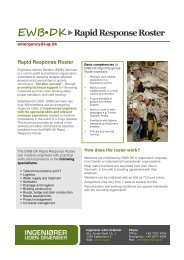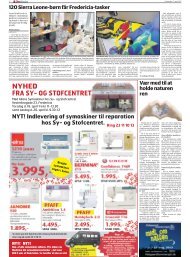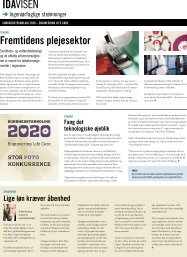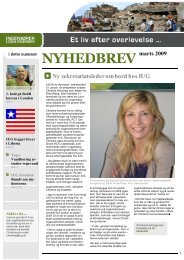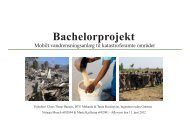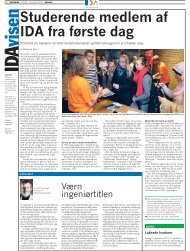You also want an ePaper? Increase the reach of your titles
YUMPU automatically turns print PDFs into web optimized ePapers that Google loves.
DESIGN EVALUATION<br />
96<br />
6 W Low-cost materials and parts<br />
Common steel and wood are the main materials used in the wind turbine<br />
design. Both are relatively inexpensive and widely available in developing<br />
countries. The permanent magnets required for the generator are however<br />
less available and relatively expensive.<br />
7 D Compliance with selected parts of IEC 61400-2<br />
The IEC standard defines the environmental conditions that are used for<br />
aerodynamic performance calculations. It is further used for establishing<br />
loads cases, which form the basis for structural calculations.<br />
8 W Ability to perform localised maintenance<br />
The common materials used for the wind turbine and the standard operations<br />
needed for component manufacturing, ease localised maintenance and<br />
component replacement.<br />
9 W Low maintenance requirements and high life expectancy<br />
Features such as corrosion protection, sealed bearings and a protectivenacelle<br />
cover, yield generally low maintenance requirements. The longevity of<br />
the wind turbine is estimated to at least 19 years (limited by the wooden<br />
blades).<br />
10 W Flexibility for reconfiguration with different components<br />
If convenient several components, including tower and rotor blades, may be<br />
replaced without changing the design as a whole. Exchanging the generator,<br />
which is a highly integrated part of the proposed design, requires several<br />
constructional modifications, but it is a valid option.<br />
11 D Ability to install wind turbine manually, i.e. without a crane<br />
A gin pole lifting system enables manual installation of the tower.<br />
Table 11.1: Statement of how the product wishes and demands of the requirement list are<br />
met<br />
From table 11.1 it is concluded that the solution is functional for the intended purpose, as<br />
the product demands are met. It is further concluded that the solution is of considerable<br />
quality, as the product wishes generally are fulfilled to a high degree.<br />
A SWOT analysis has been carried out as a supplement to the statement of table 11.1. The<br />
purpose of the analysis, shown on figure 11.1, is to identify the overall the Strengths,<br />
Weaknesses, Opportunities and Threats of the developed wind turbine design.



